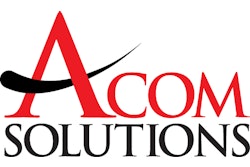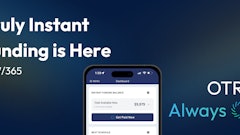Is your company getting the most from its supply management function? Here's a step-by-step look at how to phase in a successful "end-to-end" supply management strategy.
Growing grass in New England can be quite a challenge. There is no single key to succeeding at this task; using the most expensive and "guaranteed" seed will certainly fail if you sow it on unprepared native, rocky soil. Watering profusely will only sprout the crabgrass faster, unless you attended to preventing its germination. And applying the proper fertilizer at the right time will only "burn out" an under-watered lawn quicker during the hot, dry summer months.
What does this have to do with supply management? Well, just as you need a comprehensive program that addresses all the keys to "turf success," the supply management professional cannot succeed with a one-dimensional sourcing strategy.
Simply establishing commodity teams and entering into enterprise-wide contracts for key materials is not enough. Having an e procurement capability to order indirect material from a Web-enabled catalog does not constitute a procurement strategy. Moreover, your job is not complete just because you have appointed a "director of strategic sourcing."
The greatest benefit to the organization from the supply management function comes with the implementation of a strategy that addresses the entire spectrum of supply management challenges.
The Challenges
For those organizations that have yet to devote serious consideration and corporate focus to the supply management function, the challenges are numerous. Manual, cumbersome and disconnected procurement processes foster off-contract or "maverick" buying, which results in distributing a company's volume across too many suppliers, rather than utilizing preferred suppliers with global contracts and preferential pricing and terms.
Inefficient processes lead to fat procurement organizations, high per-order or per-line-item costs, and slow response times. According to the Yankee Group in its report "Enterprise Spend Management: Taking Charge of Enterprise Value," only about 50 percent of the commodities or total corporate spend is actually managed by the procurement organization, with commodities such as airlines, travel, Web-conferencing and couriers making up a large portion of this unmanaged spend. Few organizations have spent the time to categorize all materials for type, usage and supply philosophy, or suppliers for strategic alignment.
Competitor firms are sourcing both direct and indirect materials from low-cost countries, including China, India, Malaysia, Singapore and Korea. The savings associated with offshore sourcing can range from 10 to 35 percent of the total delivered cost, according to Aberdeen Group's "Global Sourcing: What You Need to Know to Make It Work," providing, of course, that you are prepared to manage the technical, geopolitical, and logistics risks associated with that activity.
To rationalize a company's supplier base you need accurate spend data. However, a roll-up of payables data to the chart of accounts (COA) usually results in spend data becoming hopelessly aggregated to the point where they are of little value to the procurement professional. And spend data in the enterprise resource planning (ERP) system is often categorized by business unit rather than anything useful, such as vendor, geography or finished-goods stock-keeping unit (SKU). In addition, a large percentage of spend data come from external systems, including bank wire transfers, credit card and purchasing card (P-card) vendor systems, freight forwarding and freight payment systems. Performing a comprehensive spend analysis that provides the data with which to rationalize the supply base is often too costly and time-consuming, but doing the job partway (only for a specific commodity or business unit) is guaranteed to not provide the enterprise-wide insight that will lead to big opportunities.
Another challenge is that attempts to change corporate purchasing behavior when business units are measured on parochial performance metrics generally fail. Employees continue to book air-travel segments from "discount" Internet sites, believing that they are saving their departments or company money. The business-unit-focused metrics obscure the fact that the loss of volume for the preferred carrier will result in the loss of (much larger) back-end rebates that would accrue if the predicted volumes were reached.
From an organizational perspective, there is also no way to effectively control spend, due to the distributed nature of the procurement function and the lack of enforcement of policies and guidelines that authorize employees to make purchases. Everybody seems to be authorized to commit corporate spend to external parties. When lacking a control mechanism there is no way to stem the "leakage," and therefore no way to apply a "cash tourniquet" during short periods of economic downturn.
The challenges described above touch on just a few of the problems that the senior procurement executive faces. That executive needs a broad, comprehensive plan that will outline the organizational structures, business processes and procurement programs that will comprise the supply management strategy. The procurement executive also needs to institutionalize that strategy to stem the flow of bad buying, reduce the number of suppliers, and ensure that the company is paying the right price (not necessarily the lowest price) for everything that is purchased, passing the savings along as increased shareholder value.
While individual initiatives can have a positive effect, the greatest benefits occur when addressing the entire breadth of the supply management function. What follows is a phased approach to implementing an "end-to-end" supply management strategy.
Build the Foundation
In order to lay the groundwork for a truly end-to-end supply management strategy, first start by categorizing both materials and suppliers. Material categories are designations for every purchased item that describe both the strategic value of that material to the organization and the sourcing complexity of that material. This often takes the form of a matrix. Common designations are Commodity (or Commercial-off-the-shelf (COTS)), Special (or Custom) and Unique. The matrix may also carry the designation of material usage (Indirect, Direct or Service).
Supplier categories are designations for every supplier from which a company buys material that describe the nature of the relationship the organization has with that supplier. Suppliers can be Commodity suppliers (suppliers of commodity or COTS items); Operational suppliers (of key, but not unique, materials); or Strategic suppliers (suppliers with which there is a true symbiotic relationship).
Next, document the company's primary procurement processes to understand where process improvements may be made or where automation efforts may be launched. Inventory the information systems in which spend data may be found, considering both internal and external systems. Internal systems may include accounts payable, purchasing, general ledger, manufacturing, materials resource planning (MRP) and ERP. External systems include bank wire transfers, credit card and procurement card systems, foreign currency transfer mechanisms, and freight payment systems.
Then perform a comprehensive analysis of enterprise-wide spend. This is the foundation on which numerous procurement initiatives rest.
The next step is to establish baseline cash metrics of key performance indicators, including cash-to-cash cycle time, inventory days of supply, return on working capital, and current and historical cost by commodity. In this way, a variety of procurement initiatives may be measured, and the value to the organization of the supply management function may be communicated.
Finally, the structure of the organization should be designed to enforce the concept of the authorized buyer, a class of employee authorized to commit corporate funds to external suppliers. The role of authorized buyer includes specification of allowable commodity classes and spending limits by commodity. Often these boundaries are enforced through a comprehensive P-card program. Once you select the organization's authorized buyers it will be easier to enact such enterprise-wide initiatives as a spending freeze or to foster the behavior that will increase utilization of global contracts and reduce maverick spend.
Enable Change — Begin the Transformation
As the organization's supply management strategy begins to change, a supply philosophy must be established for each material or SKU, and is closely tied to the material and supplier categories. Supply philosophies are designations of the approach taken to sourcing any particular material. The spectrum in obtaining material ranges from multiple qualified sources (dual) to a single source selected from several qualified sources (single) to a sole source (the only source for a particular material).
Next, automate the core procurement processes, including the transactional processes and the RFx (request for information (RFI), request for proposal (RFP) and request for quotation (RFQ)) process. Establish a Web-enabled desktop e-procurement platform to foster correct procurement behaviors, reduce and/or eliminate transaction costs, increase trust and satisfaction with the procurement organization, make it easier to procure common items, enforce utilization of preferred suppliers and global contracts, and achieve volume aggregation goals.
Implement a formal RFI, RFP, and/or RFQ process to ensure that suppliers understand that they are in a competitive situation and to make it easy for a potential vendor to respond to your posted needs. Automate the process with a Web-enabled vendor portal that includes workflow capabilities. Provide guidance and policy information online so that vendors understand expectations and codes of conduct, and have available all necessary contact information. Foster collaboration across the supply chain to achieve cost reductions through modification of engineering requirements that move materials from "unique" and "custom" categories toward the "commodity" classification.
Then design, develop and implement information systems integration strategies and architectures between key suppliers and the company's back-office systems and processes, making it easier for suppliers to do business with the company. This also makes it easier for employees to follow the prescribed procurement processes, rather than go around them, thus reducing off-contract buying and ultimately lowering the total delivered cost of materials.
Based on the as-is process maps, it is time to determine the costs of common procurement activities so that the net benefit of process changes and procurement initiatives may be valued and shared within the organization. Create commodity-costing models that allow the calculation of total delivered cost of materials, especially those sourced from low-cost countries. These models can be used in the evaluation of procurement opportunities and allow an apples-to-apples comparison that includes the risks associated with offshore sourcing.
Finally, utilize resources from business units that have a vested interest in one or more classes of commodities to commission commodity managers, commodity teams or global-contracts managers to address a variety of procurement initiatives on behalf of the organization. Make it clear that the quid-pro-quo of this activity is that while these resources are working to source materials at the best value for themselves and the rest of the organization, other teams are doing the same for commodities that will benefit their business units. Establish ongoing training programs to transform the procurement function from "order placers" to strategic business partners. Professional societies and their accreditation and certification programs; peer-to-peer sharing of successful procurement projects; and online, self-paced skill instruction and review all add to the knowledge and acumen of the procurement function.
Deliver the Value
Now it's time to see how the supply management strategy affects the company's bottom line. First, define the procurement initiative process. Every project launched to reduce procurement costs will require time, attention, resources, approvals, data, and a project plan. While details may vary, the basic approach to all procurement initiatives is similar, and having a defined methodology will ensure that commodity teams and contracts directors have the necessary information, approvals, and authority to commit the organization's funds to external parties.
Next, launch procurement initiatives. Lowering the total delivered cost for any material depends on a number of factors, including the categorization of the material, the suppliers from whom that material is available, and the supply philosophy that will work to the organization's best advantage. Whether implementing the most simplistic supplier replacement or volume aggregation project, or employing reverse auctions and vendor managed inventory initiatives, be sure to keep track of "before" and "after" metrics to evaluate the efficacy of the program. Once implemented, be vigilant for "cost creep" that can undo the savings achieved.
Then develop supplier scorecards that represent a "360-degree evaluation" of supplier performance consistent with the contract period of performance. Obtain performance data from contract management personnel, end users of the supplier's products, and the suppliers themselves. Use these evaluations in annual or periodic negotiations with suppliers to set future pricing and performance metrics.
Finally, establish procurement competency grading programs. Similar to the Six Sigma Green Belt and Black Belt rankings, procurement professionals can be ranked based on their knowledge of procurement programs and their applications, their experience in negotiation with suppliers, the magnitude of contracts entrusted to their stewardship, and a variety of other factors affecting their seniority and stature in the organization. It becomes incumbent on higher ranks to formalize and pass on their knowledge to the acolytes.
It may seem a daunting task to design and implement a broad, all-inclusive supply management strategy. While it certainly is a significant effort, it can be simplified into a series of easily achieved phases that build upon each other. Start with the basics of understanding the processes and spend, and move toward comprehensive programs that identify the global sources of supply for all commodities that represent the lowest total cost based on material specifications and market forces. And, believe me, it's a lot easier than growing grass in New England.
About the Author: Eliot Madow is an independent consultant with over 30 years experience in supply chain, supply management and information technology. He can be reached at [email protected].

















